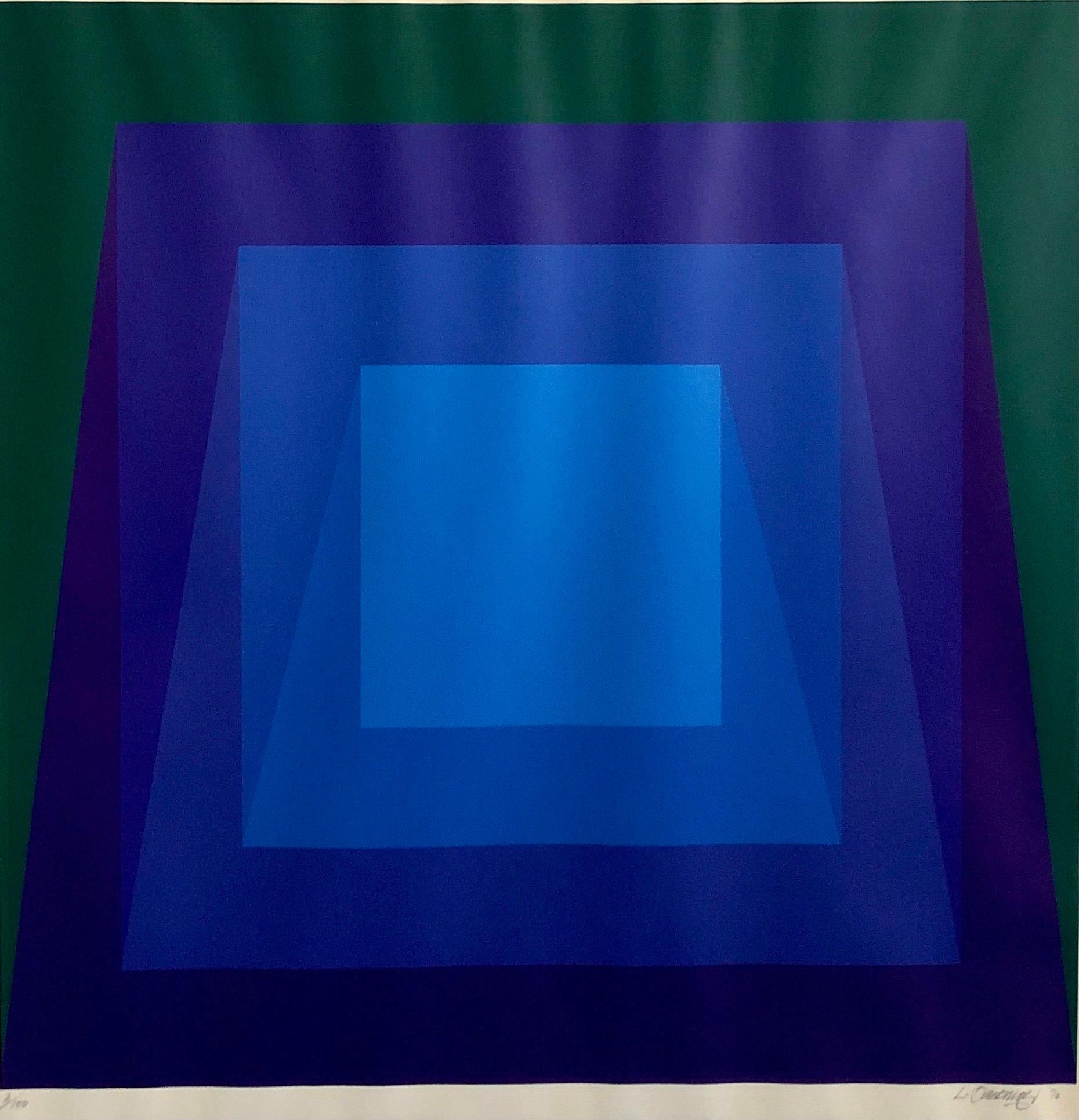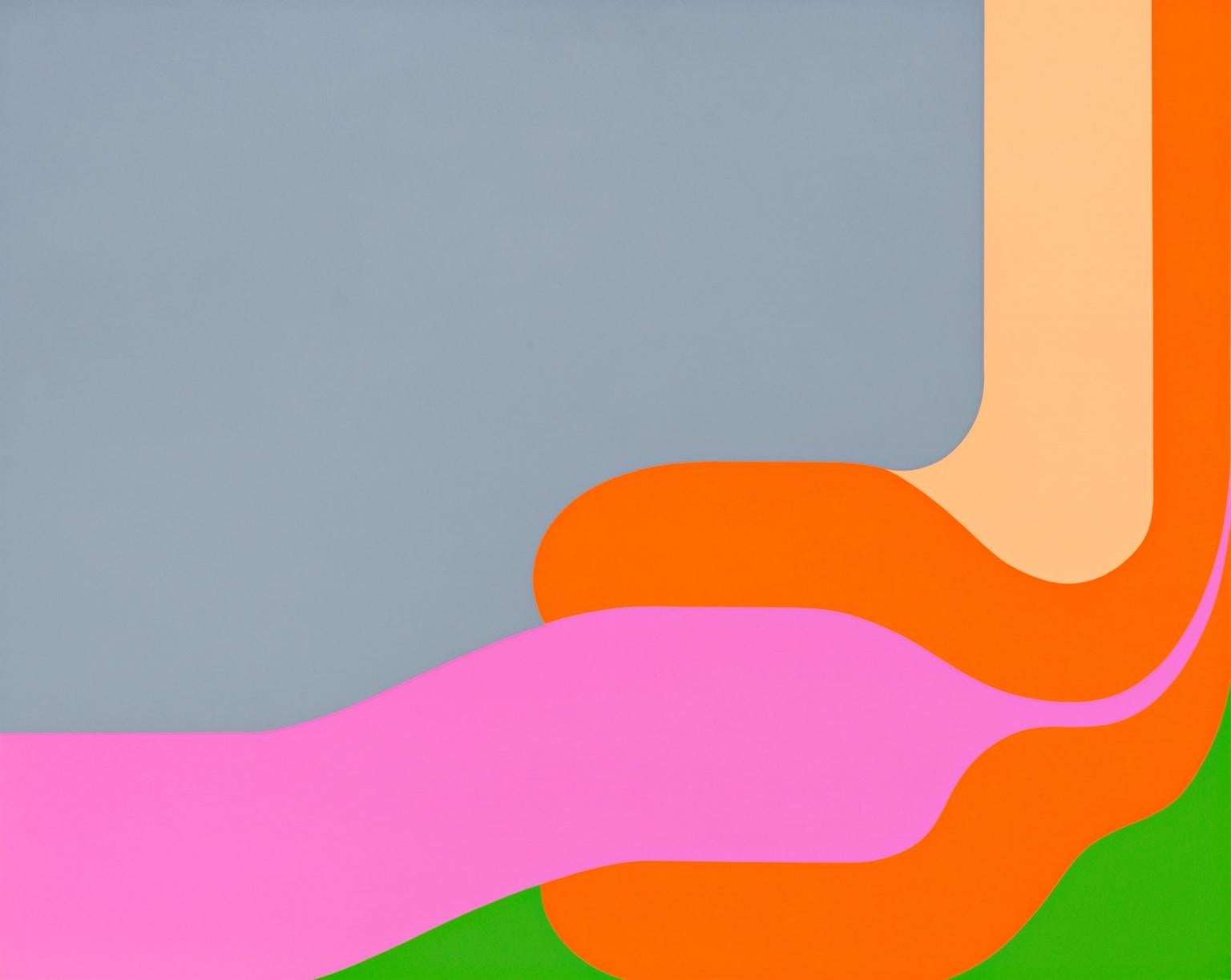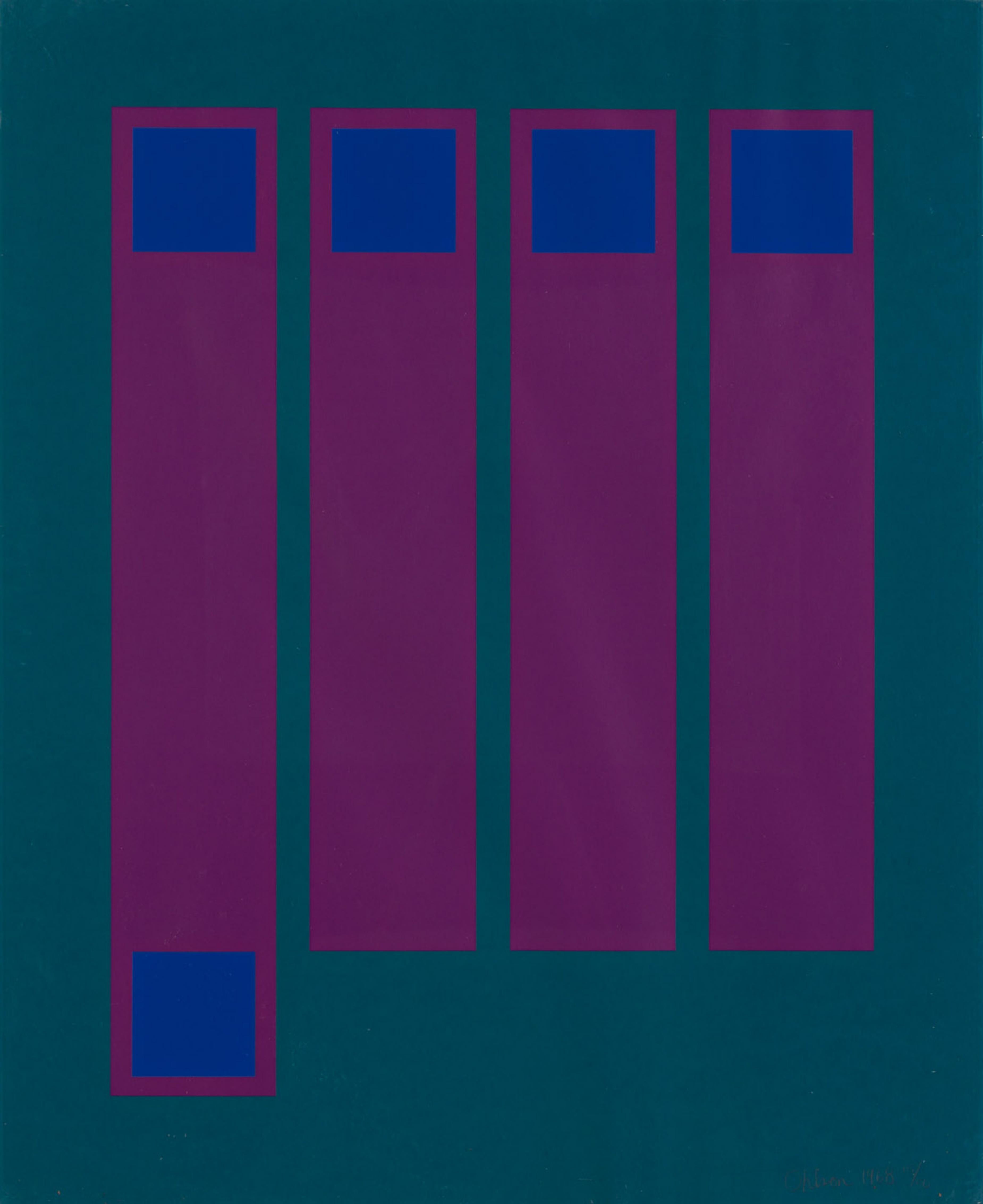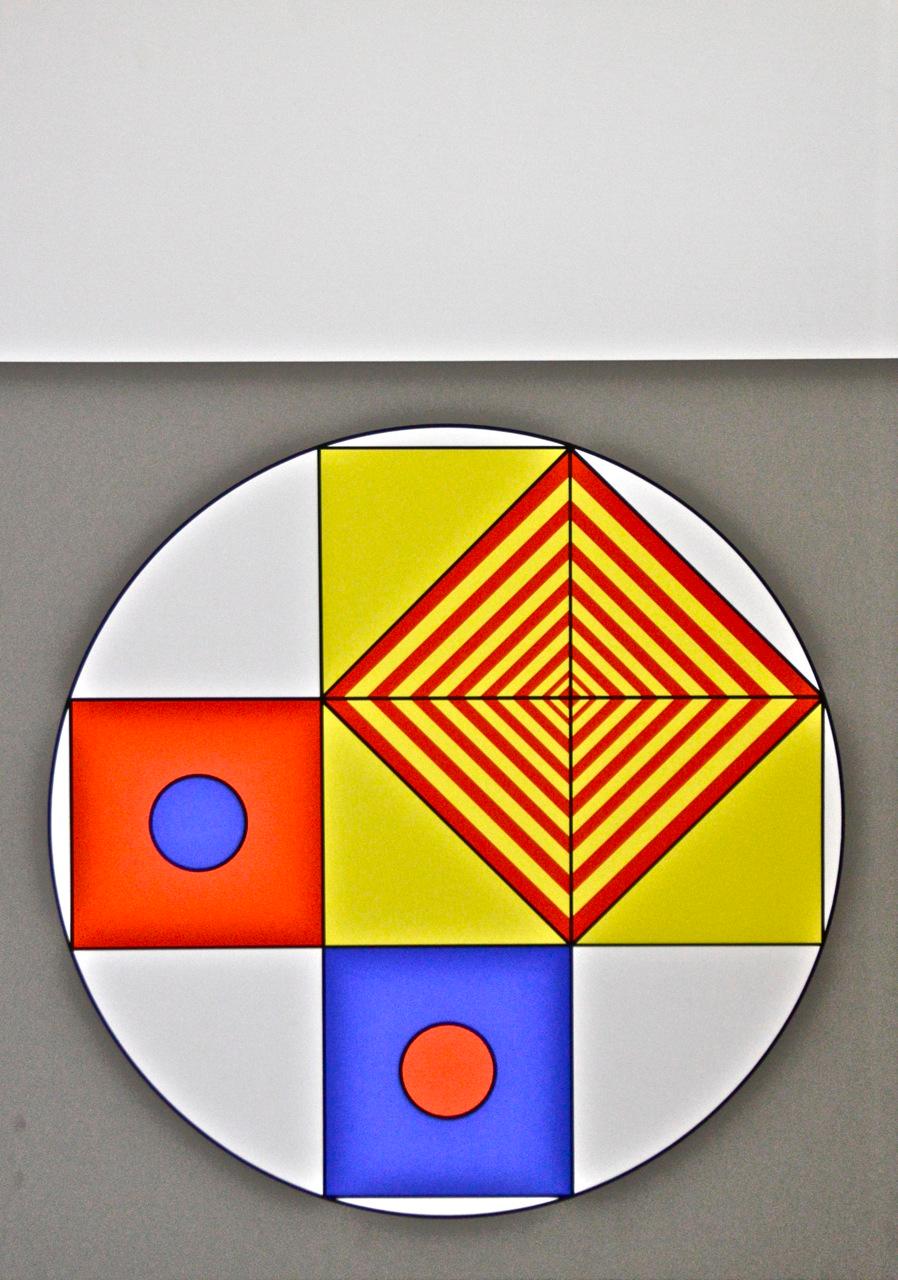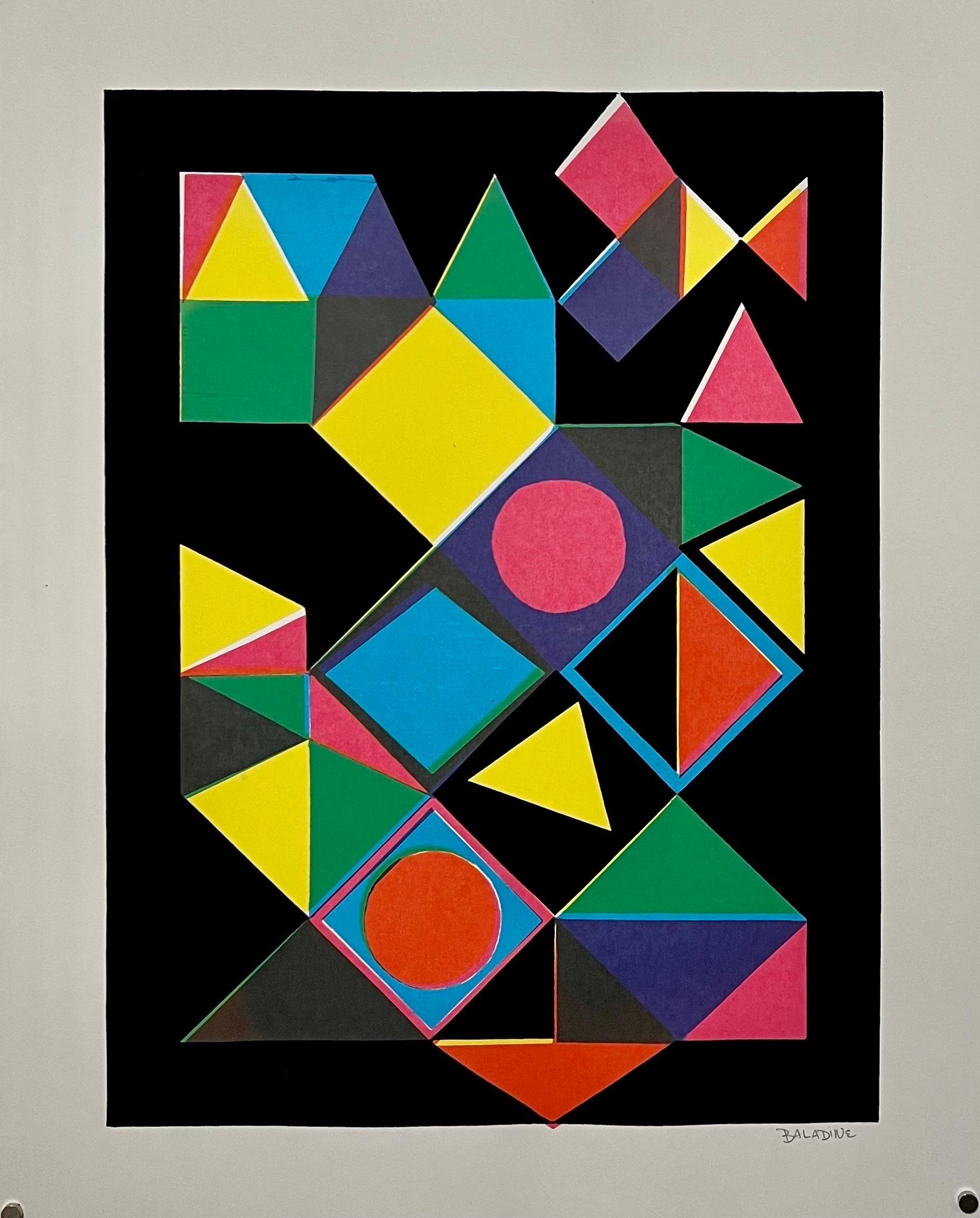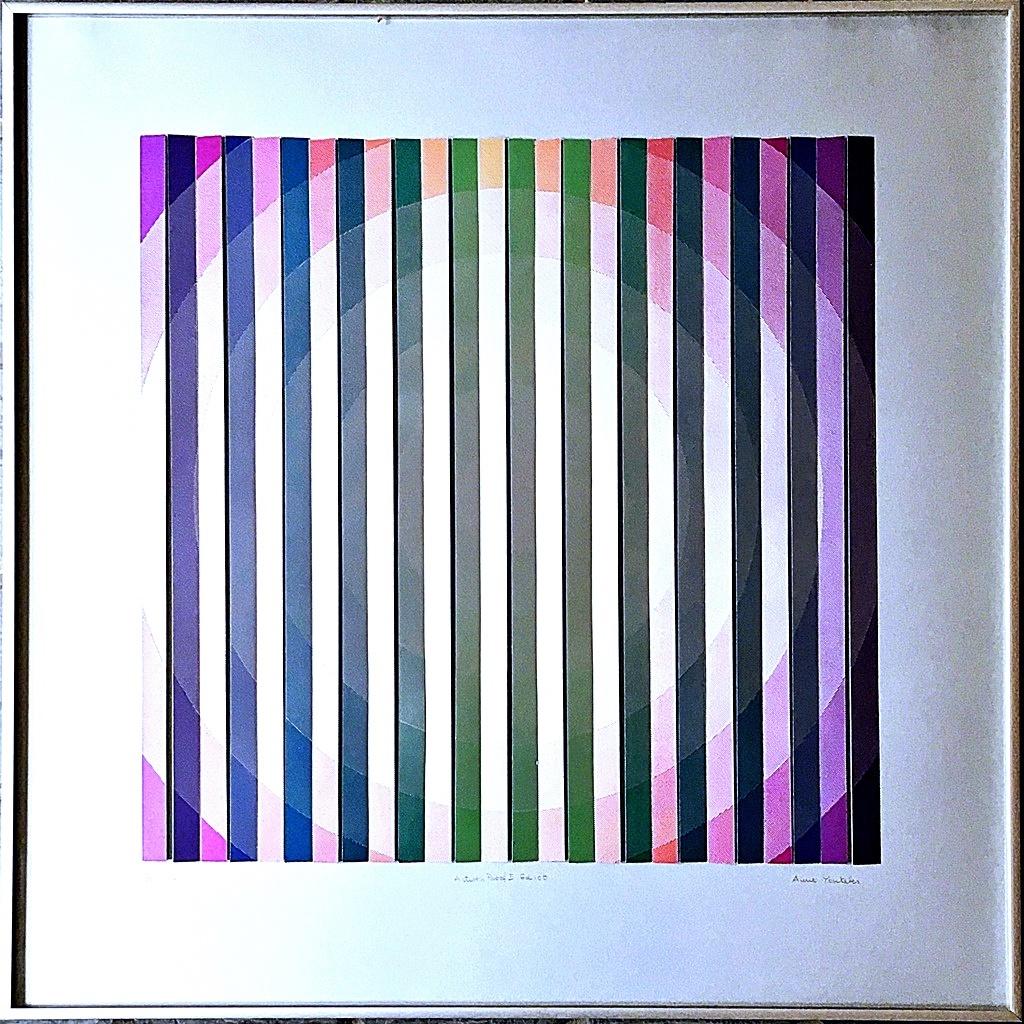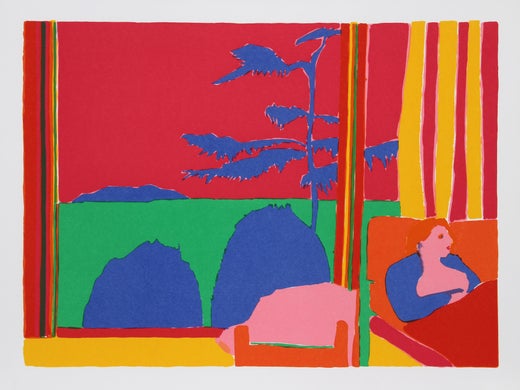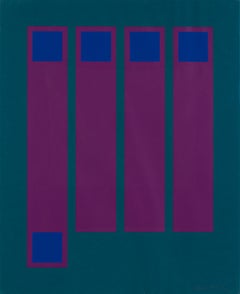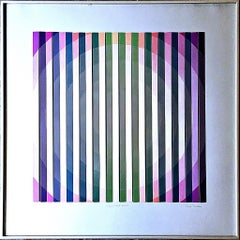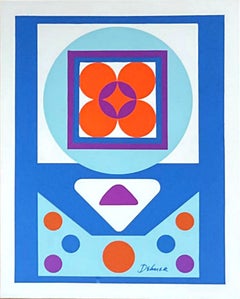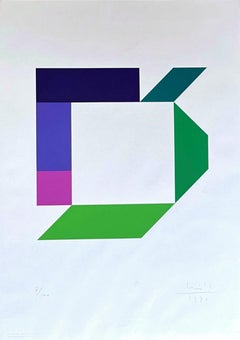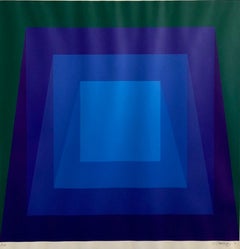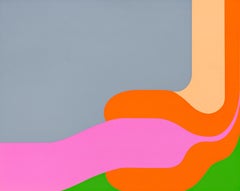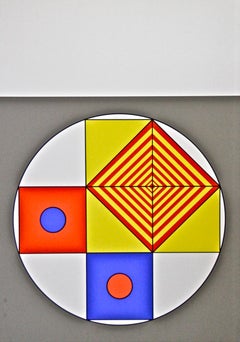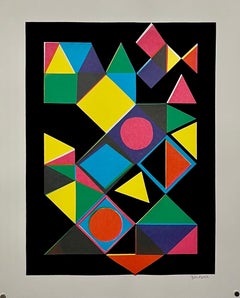Items Similar to Rare Op Art Mid Century Modern Geometric Abstraction 1969 silkscreen Signed 6/9
Want more images or videos?
Request additional images or videos from the seller
1 of 7
John GrilloRare Op Art Mid Century Modern Geometric Abstraction 1969 silkscreen Signed 6/91969
1969
$2,500
£1,923.49
€2,198.07
CA$3,578.10
A$3,901.85
CHF 2,049.74
MX$46,766.01
NOK 25,992.76
SEK 24,188.71
DKK 16,417.14
About the Item
John Grillo
Untitled Op Art Mid Century Modern, 1969
Color silkscreen on art paper with deckled edges
Signed and dated lower right; numbered 6/9 lower left
Limited Edition of only 9
Unframed
Accompanied by Certificate of Guarantee issued by Alpha 137 Gallery
The present work is a dazzling, extremely rare 1960s screenprint by Abstract Expressionist painter John Grillo, who died in 2014 at the age of 97. Hand signed and numbered from a small edition of only 9, it is a fusion of Op Art, Pop and Abstract Expressionist elements, in a vibrant palette anchored in red - a nod to the psychedelic colors of the late 1960s. It is in very good condition with deckled edges
John Grillo Biography
A leading exponent of Bay Area Abstract Expressionism during the 1940s, John Grillo was a painter, sculptor, and printmaker regarded as one the purest and most influential “action painters” on the West Coast. Though his diverse and colorful body of work ranged from abstraction to figuration, his art is considered linked in its uniquely aggressive and spontaneous approach. Grillo creates bold, fluid, gestural works such as Untitled #69 (1947) and Untitled (1949) that draw on the influence of Surrealist automatism. After moving to New York in 1948, Grillo began a series of paintings consisting of small, precisely organized colored squares, as seen in Untitled (1951) and Untitled (1959); these and other works were influenced by the color theories of Hans Hofmann, with whom he studied. Grillo’s later work was more figurative, but no less colorful, with works such as Blue Hat (1978) or Duerme (1980) recalling the Expressionism of Max Beckmann.
More about John Grillo
John Grillo 1917 -2014 (Photo by Charles Fields) painter, printmaker, sculptor and teacher, was born in Lawrence, Massachusetts in 1917. After receiving his diploma from the Hartford School of Fine Arts in 1938, Grillo continued his education at the California School of Fine Arts (1946-47), later studying with Hans Hoffman in New York and Provincetown. He taught at various schools, including Southern Illinois University, University of California at Berkeley, New School for Social Research, Iowa University, and Pratt Institute, before accepting the position of Professor of Fine Arts at the University of Massachusetts at Amherst. His honors have included a Ford Foundation Grant for Work in Lithography followed by a Ford Foundation Appointment as Artist in Residence at the Butler Institute and two research grants from the University of Massachusetts, Amherst. Grillo has exhibited extensively and is well represented in numerous museum and corporate collections. John Grillo is regarded as one of the early architects of the Expressionist Movement. Grillo is collected by many museums around the world.
- Creator:John Grillo (1917, American)
- Creation Year:1969
- Dimensions:Height: 27.75 in (70.49 cm)Width: 22.5 in (57.15 cm)Depth: 0.1 in (2.54 mm)
- Medium:
- Movement & Style:
- Period:
- Condition:
- Gallery Location:New York, NY
- Reference Number:1stDibs: LU1745215603802
John Grillo
John Grillo 1917–2014 A leading exponent of Bay Area Abstract Expressionism during the 1940s, John Grillo was a painter, sculptor, and printmaker regarded as one the purest and most influential “action painters” on the West Coast. Though his diverse and colorful body of work ranged from abstraction to figuration, his art is considered linked in its uniquely aggressive and spontaneous approach. Grillo creates bold, fluid, gestural works such as Untitled #69 (1947) and Untitled (1949) that draw on the influence of Surrealist automatism. After moving to New York in 1948, Grillo began a series of paintings consisting of small, precisely organized colored squares, as seen in Untitled (1951) and Untitled (1959); these and other works were influenced by the color theories of Hans Hofmann, with whom he studied. Grillo’s later work was more figurative, but no less colorful, with works such as Blue Hat (1978) or Duerme (1980) recalling the Expressionism of Max Beckmann. 1947 Daliel Gallery 1960 Tanager Gallery
1961 The Howard Wise Gallery
1962 University of California, Berkeley
1964 Butler Institute of American Art
1969 Benedict Art Center
1970 Robert Dain Gallery
1973 Landmark Gallery
1982 Jean Lumbard Fine Arts
1984 Museo de Arte Moderna
2000 Aaron Gallery
1988 Provincetown Art Association Selected Group Exhibitions 1950 The Kootz Gallery
1955 Walker Arts Center
1953 Whitney Museum of American Art
1960 Walker Art Center
1961 Solomon R. Guggenheim Museum
1961 Yale University
1962 Dallas Museum of Fine Arts
1962 Seattle Worlds Fair
1963 Museum of Modern Art, New York
1963 San Francisco Museum of Modern Art
1970 The Brooklyn Museum of Art
1973 The Oakland Museum of California
1979 The Metropolitan Museum of Art
1996 The Laguna Beach Museum Selected Collections The British Museum The Metropolitan Museum of Art
The Solomon R. Guggenheim Museum of Art
The Whitney Museum of American Art
The Brooklyn Museum of Art
Walker Art Center
Los Angeles County Museum
Butler Institute of American Art
Bundy Art Gallery Museum
Smith College Museum
Bennington College
Portland Museum
About the Seller
5.0
Platinum Seller
Premium sellers with a 4.7+ rating and 24-hour response times
Established in 2007
1stDibs seller since 2022
465 sales on 1stDibs
Typical response time: 1 hour
- ShippingRetrieving quote...Shipping from: New York, NY
- Return Policy
More From This Seller
View AllDoug Ohlson 1960s Op Art Silkscreen Signed/N Geometric Abstraction Op Art Framed
By Doug Ohlson
Located in New York, NY
Doug Ohlson
Untitled 1960s Op Art Silkscreen, 1968
Color silkscreen on wove paper
22. × 18 1/5 inches x .5 inches
Hand signed, dated and numbered 15/50 on the front
Frame included: h...
Category
1960s Op Art Abstract Prints
Materials
Screen
Gemini, 1960s Op Art geometric silkscreen, mixed media paper, Signed AP, Framed
By Anne Youkeles
Located in New York, NY
Anne Youkeles
Gemini, ca. 1969
Three-dimensional mixed media silkscreen on folded sheets of thin card
Hand-signed by artist in pencil, titled and annotated Artist's Proof I from the ...
Category
1960s Abstract Geometric Abstract Prints
Materials
Paper, Mixed Media, Laid Paper, Screen
Silkscreen Mid Century Modern Geometric Abstraction by renowned female sculptor
By Dorothy Dehner
Located in New York, NY
DOROTHY DEHNER
Mid Century Modern Geometric Abstraction, ca. 1970
Silkscreen on wove paper
Plate signed on the front; bears Academy Arts label on the back
Published by: Academy Arts...
Category
Mid-20th Century Abstract Geometric Abstract Prints
Materials
Screen
Max Bill Mid Century Modern Geometric Abstraction Signed silkscreen 7/100 Europe
By Max Bill
Located in New York, NY
Max Bill
Untitled Mid Century Modern Geometric Abstraction, 1970
Silkscreen on wove paper
27 1/2 × 19 1/2 inches
Signed, dated and numbere...
Category
1970s Abstract Geometric Abstract Prints
Materials
Screen
$1,250 Sale Price
50% Off
Geometric Abstraction Color field silkscreen signed Artists Proof, Museum Frame
By Ludwig Sander
Located in New York, NY
LUDWIG SANDER
Untitled geometric abstraction
Artists Proof, aside from the regular edition of 90
Hand signed and annotated AP on the front
Elegantly matted and framed in white wood m...
Category
1970s Abstract Geometric Abstract Prints
Materials
Screen
Penetration of 4 Interlaced Colour Groups Geometric Abstract Signed/N Silkscreen
Located in New York, NY
RICHARD PAUL LOHSE
Penetration of Four Interlaced Colour Groups (Durchdringung von vier verschränkten Farbgruppen), 1970
Color Silkscreen on velincarton (thin board)
Edition 32/50
P...
Category
1970s Abstract Geometric Abstract Prints
Materials
Screen
You May Also Like
1970's Op Art Cintique Geometric Abstract Color Gradations Silkscreen Domberger
Located in Surfside, FL
Silkscreen serigraph Op art print.
Luitpold Domberger (1912-2005 ) was a pioneer of artistic screen printing in Germany.
Luitpold (Poldi) Domberger...
Category
1970s Op Art Abstract Prints
Materials
Screen
Sven Lukin Modernist Original Screenprint Framed 1969 Bright Modern Mid Century
By Sven Lukin
Located in Buffalo, NY
This incredible work comes with a COA.
The work is currently framed in a new acid free mat and the original 1969 silver metal frame, but new framing is available included in the pric...
Category
1960s Abstract Geometric Abstract Prints
Materials
Silver
Composition VII - Original Screen Print by Franco Cannilla - 1971
By Franco Cannilla
Located in Roma, IT
Composition VII is an original serigraph realized by Franco Cannilla in 1971.
The artwork is hand-signed in pen by the artist. Edition of 40 prints.
...
Category
1970s Op Art Abstract Prints
Materials
Screen
1960's Baladine Op Art KInetic Screenprint Lithograph Vibrant Mod Neon Colors
Located in Surfside, FL
This is hand signed in pencil. It is not numbered.
This appears to be a silkscreen or serigraph or a multi stone lithograph. It is a great hard edged, geometric, vibrant mid century...
Category
1960s Abstract Prints
Materials
Lithograph, Screen
Abstract Geometric 1970s Kinetic Silkscreen Screen Print Manner Vasarely Op Art
By Paul M. Levy
Located in Surfside, FL
Paul Levy (American, b. 1944) An established designer and illustrator, Paul M. Levy was born in Brooklyn, New York, in 1944. He received his B.S. in Industrial Design from the Univer...
Category
1970s Abstract Geometric Abstract Prints
Materials
Screen
Abstract Geometric 1970s Kinetic Silkscreen Screen Print Manner Vasarely Op Art
By Paul M. Levy
Located in Surfside, FL
Paul Levy (American, b. 1944) An established designer and illustrator, Paul M. Levy was born in Brooklyn, New York, in 1944. He received his B.S. in Industrial Design from the Univer...
Category
1970s Abstract Geometric Abstract Prints
Materials
Screen
More Ways To Browse
Midcentury Pop Art
Mid Century Silkscreen
Helen Frankenthaler Woodcut
Jasper Johns Etching
Jasper Johns Flag Print
Jean Rets
Jim Mccormick
Josef Albers Set
K B Hwang
Kenji Nanao
Leonardo Nierman Lithographs
Luigi Ontani
Marcel Duchamp Signed
Matisse La Piscine
Max Bill Silkscreen
Mel Strawn
Miro Album 21
Miro Large Prints
